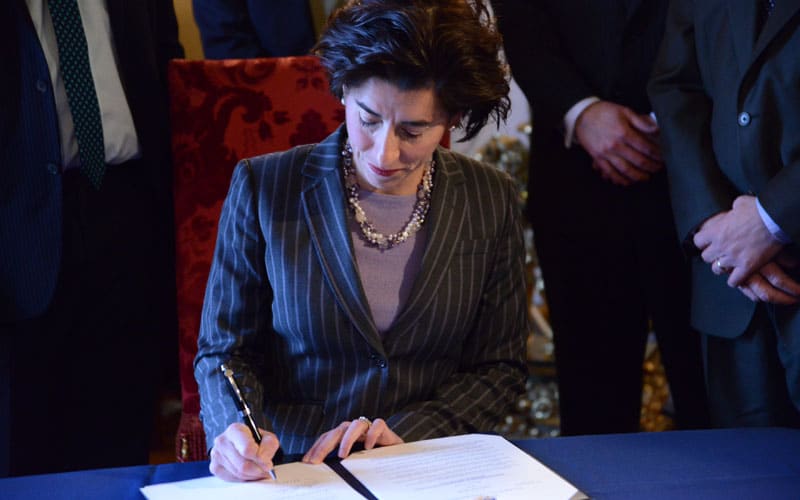The nation’s smallest state has big plans for renewable energy. While Rhode Island made little progress under previous administrations, under Governor Gina Raimondo the state has waded into renewable energy deployment and grid modernization, as well as hosting the nation’s first offshore wind farm.
But while Governor Raimondo has set a target for the state to deploy 1 GW of renewable energy by the end of 2020, the path to reach this ambitious goal has been unclear. This goal did not entail an equivalent increase in the state’s Renewable Energy Standard (RES), and that the state’s most important policy to support solar deployment is capped at 40 MW annually.
Yesterday, however, the governor announced a major step towards reaching this goal in the form of a 400 MW competitive solicitation for renewable energy. All sources of generation that comply with Rhode Island’s RES will be eligible, including solar, biomass, small hydro and land-based and offshore wind.
However, the competitive nature of the solicitation may determine which projects are selected, and the current higher price of offshore wind in the United States may rule out this resource unless a carve-out or other means of differentiating this resource is provided.
Neither the governor’s office nor state officials whom pv magazine spoke with were able to offer much in the way of additional information, other than that the solicitation will be held this summer and that all sources will compete on price, though the governor’s office has stated that additional details will be forthcoming.
As it is more densely populated than the nation of Japan, Rhode Island faces significant challenges to siting large-scale renewable energy projects. However, as is the case with the state’s RES policy, projects under the solicitation will not be limited to the state’s boundaries, but to any projects which can sell power to utility National Grid, opening up the whole of the region.
But New England as a whole also suffers challenges for siting, with affluent residents and owners of vacation homes often opposing wind and even transmission projects, sometimes joined by conservation groups – all of which can be seen in the ongoing battle over the Northern Pass transmission project.
Additionally, Maine, under its current idiosyncratic Governor Paul LePage, has put a moratorium on wind projects, which closes off the best location for land-based wind in the region.
As of the end of the third quarter of 2017 Rhode Island had deployed 230 MW of renewable energy, much of which has come online during Governor Raimondo’s term.
This content is protected by copyright and may not be reused. If you want to cooperate with us and would like to reuse some of our content, please contact: editors@pv-magazine.com.









By submitting this form you agree to pv magazine using your data for the purposes of publishing your comment.
Your personal data will only be disclosed or otherwise transmitted to third parties for the purposes of spam filtering or if this is necessary for technical maintenance of the website. Any other transfer to third parties will not take place unless this is justified on the basis of applicable data protection regulations or if pv magazine is legally obliged to do so.
You may revoke this consent at any time with effect for the future, in which case your personal data will be deleted immediately. Otherwise, your data will be deleted if pv magazine has processed your request or the purpose of data storage is fulfilled.
Further information on data privacy can be found in our Data Protection Policy.